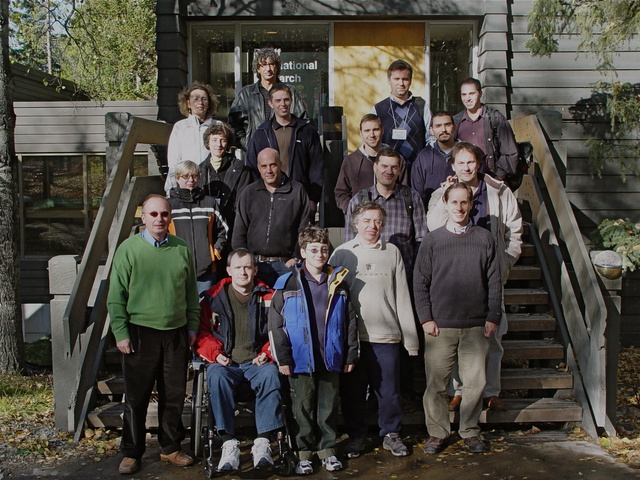Self-Similarity and Branching in Group Theory (08w5066)
Organizers
Rostislav Grigorchuk (Texas A & M University)
Banjamin Steinberg (City college of New York)
Zoran Sunic (Texas A & M University)
Description
theory has recently come to the forefront. Self-similar groups are
the algebraic counterparts to fractals. Fractals quite often arise as
Julia sets of certain rational functions, say polynomials. For
instance, the Basilica of Saint Mark fractal is the Julia set of the
polynomial $z^2+1$. The famous Sierpinski gasket is also the Julia
set of a rational function. To each such rational function, there
is associated a self-similar group, which encodes algebraically the
Julia set and the dynamics of the rational function on the Julia
set.
The study of self-similar groups has led to new insights and a better
understanding of fractals and their related dynamics. A
longstanding-problem concerning the rabbit fractal and the airplane
fractal was solved via the method of self-similar groups.
Self-similar groups also have interactions with Computer Science,
since much of their structure can be encoded by finite state machines.
These machines can be used in turn to produce the fractals.
The Banff International Research Station for Mathematical Innovation and Discovery (BIRS) is a collaborative Canada-US-Mexico venture that provides an environment for creative interaction as well as the exchange of ideas, knowledge, and methods within the Mathematical Sciences, with related disciplines and with industry. The research station is located at The Banff Centre in Alberta and is supported by Canada's Natural Science and Engineering Research Council (NSERC), the US National Science Foundation (NSF), Alberta's Advanced Education and Technology, and Mexico's Consejo Nacional de Ciencia y Tecnología (CONACYT).






